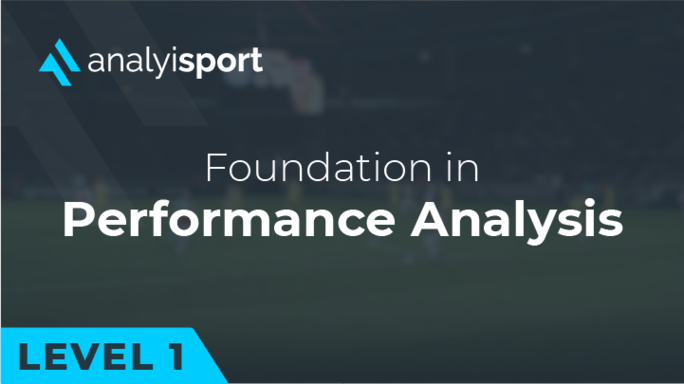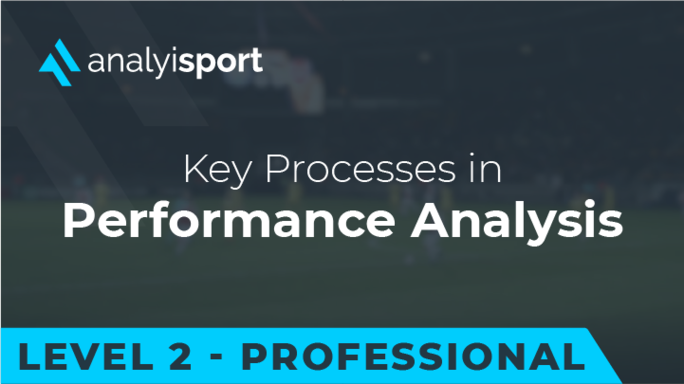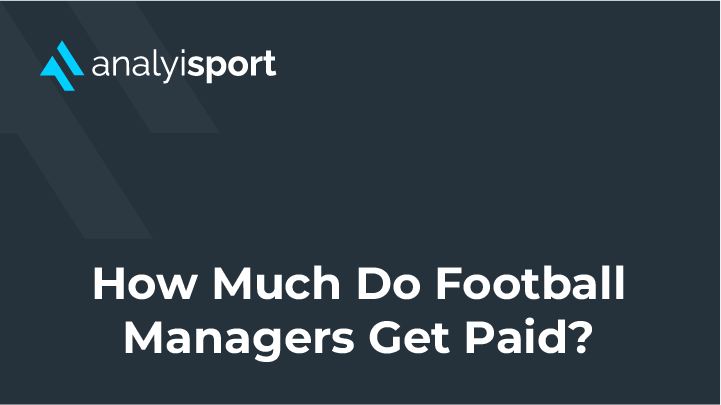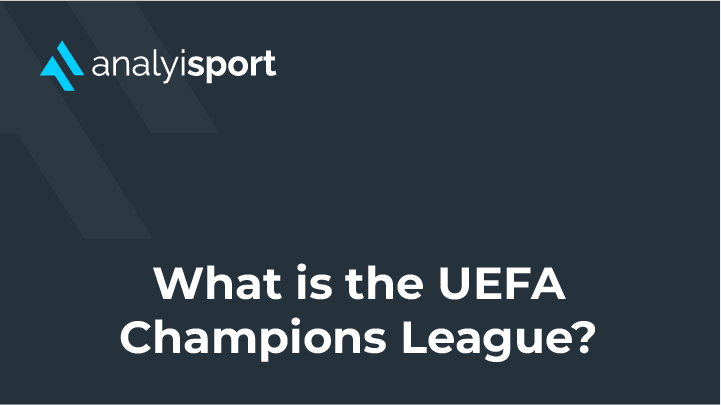How Football Clubs Use Data to Sign Players
‘Of course I would say that you should never recruit a player based on data alone,’ says Dries Belaen, Head of Recruitment at Belgian side Anderlecht. ‘On the other hand, we will also not only recruit a player based on video or live scouting. We need the full picture.’[1]
As the use of data analysis grows in football, one of the areas where it has had the most impact is player recruitment. Without the right players, a team is never going to succeed.
Making the correct recruitment decisions is hard. As the clock ticks towards the end of a transfer window, agents are eagerly pushing their clients, fans are demanding big names and journalists are sharing the latest gossip. Using data is a way to cut through this noise and emotion and make a smart decision.
It has not replaced the traditional scout who watches match after match and uses his own judgement to estimate whether a player would be a good signing or not. Data has supplemented this work.
At the higher levels of the game, clubs now recruit the best talent from all over the world. They are also competing against each other in a market place where transfer fees for the most in-demand players can reach astronomical figures. Data analysis is a valuable tool for sifting through the hundreds of thousands of players around the world. It vastly increases the range of players a club can look at and allows the scouting team to focus on the players most likely to be suitable for the club.
By working with the data, clubs can discover the players in unexpected places who will improve their team and are available at an affordable price.
What Data Are Football Clubs Using?
Data is now commonly used in football, but some clubs are leading the way in data-driven recruitment. Brentford is one such club. The West London side have made a significant profit in the transfer market in recent years. Using their own analytical model to compare the relative strengths of teams from different leagues, the club have been able to find talented players in both the lower leagues of England and abroad in countries such as France and Denmark. Signings such Ollie Watkins and Neal Maupay have gone on to earn big money moves to Premier League clubs after catching the eye at Brentford.
Another clubs having success with data in the transfer market is Liverpool. Data plays an important role in their ability to find the right players for the quick counter-pressing style of play favoured by manager Jürgen Klopp. In recent years, their transfer strategy has been very successful, bringing in the likes of Mo Salah, Virgil van Dijk and Alisson who have helped the club to win the Champions League in 2019 and the Premier League in 2020.
Ian Graham, Director of Research in Liverpool’s data department, has developed a unique way of analysing player performance. For every action by a player on the pitch, such as a tackle, pass or shot, Graham uses the data to calculate how it affects the team’s chances of scoring a goal. He calls this metric ‘goal probability added.’
The Guinean midfielder Naby Keita is one player that Liverpool have signed after being impressed by his stats. It was during the player’s time at the Austrian club Red Bull Salzburg that he first came to Graham’s attention. Keita’s pass completion rate was lower than would be expected for a top midfielder, but the ‘goal probability added’ metric showed that the type of passes which Keita played were more likely to lead to a goal. Graham first recommended that the club sign the player in 2016 and he eventually signed from the German side RB Leipzig in 2018.
Mo Salah is another signing Graham recommended based on his data. The Egyptian striker had previously played in the Premier League for Chelsea, but his time in England had been unsuccessful. During his two seasons at the London club, he only played nineteen times, scoring twice. Looking at Salah’s stats, Graham felt that the player’s time at Chelsea ‘may be slight evidence against his quality’, but this was more than offset by the overall data across the player’s career as a whole.[2] Graham was right and Salah has been a great success at the club.
It isn’t only the biggest clubs using data. A division below Liverpool, in the Championship, Derby County also use statistical analysis to aid their player recruitment.
For Head of Recruitment, Joe McClaren, understanding the context of the stats is crucial when looking at potential signings. He is wary of looking at the total number of stats such as aerial duels won or the number of clearances. ‘For many reasons, taken out of context these can be misleading,’ McClaren says. ‘For example, teams that are lower down the league should be defending more and therefore bring higher numbers.’[3]
He prefers to look at percentage stats, such as the percentage of tackles won or crosses cleared. This makes it easier to compare players whose teams play with different tactics or are at opposite ends of the table. Like Graham’s metric of ‘goal probability added’, this is a way of making the data more meaningful. It also allows the club to judge whether a player is performing well despite being in a team that is performing poorly. The club also weights the statistics when looking at players abroad, depending on the quality of the league, to help compare footballers in countries where a different style of play to the English game is common.
Like Graham’s analysis of Mo Salah which discounted his poor seasons at Chelsea by looking at the data over the course of his career, Derby also use data from previous seasons to try to spot trends while making allowances for the different leagues the player may have been involved in and the different team-mates he will have had on the pitch alongside him.
The data analysis is used to flag up potential players for each position that fit with the way the manager wants the team to play. These players are then watched, either on video or in-person, and their statistics are compared with other potential recruits and with players the club already owns in the same position.
Watching the player is still crucial for Derby because there is important information about players that is not covered by the data.
‘You want to see the player to show he’s calm under pressure, you want to see how they react after an adverse situation,’ says McClaren. ‘Signs of being a team player, of leadership and of good attitude are very important to us especially in the 46-game Championship season. For this I’d say we have used live scouting, video scouting and character references to find out more than stats.’[4]
The Data Companies Helping Football Clubs to Find Players
Although the biggest clubs tend to have their own in-house data teams, other clubs make use of specialist companies which provide bespoke analytics to identify potential signings based on the needs of the club.
One such company is Twenty First Group, previously known as 21st Club. They have developed tools to calculate the link between a player’s performance and the team’s overall performance, producing a rating for each player in the team. Clubs can then use this rating to help determine whether a potential signing is likely to improve or weaken their own team.
Red Star Belgrade, the reigning champions of the Serbian SuperLiga, are one club that have made use of the scouting services offered by the Twenty First Group. In 2018, they were looking for a replacement for midfielder Guélor Kanga, who had left the club to join Sparta Prague.
Working in London, the analysts at Twenty First Group searched their database for a suitable replacement. Red Star had given them a shortlist of names which had been suggested by agents. The analysts evaluated the names on the list and found a player who was cheaper than those on the shortlist and who the data suggested would be better. That player was Lorenzo Ebecilio, a Dutch midfielder playing in the Cyprus.
‘It’s a good example of being able to widen the net using data that you just can’t do with traditional scouting or just using agents,’ says Omar Chaudhuri, Chief Intelligence Officer at Twenty First Group. ‘There’s not much data on players in Cyprus, but based on the information we do have we’re able to create real intelligence on players like that and try to understand the way they can translate across to a league like Serbia’s.’[5]
Another product available to modern clubs is TransferLab from Analytics FC. The software has a lot of built-in metrics which make the data easier to understand without the need for the club to have its own in-house data experts. It also makes use of predictive algorithms to help clubs unearth talented players who may not have yet reached their peak levels of performance. Their database includes over 90,000 players in the men’s game, and over 5,000 from the women’s game. Clients include Leeds United in England, Motherwell in Scotland and K.A.A. Gent in Belgium.
With data use expanding, Twenty First Group and TransferLab are far from being the only ones offering data analytics for player recruitment. One of the biggest names in football analytics is Wyscout. Founded in Italy in 2004, the company offer services for a range of people involved in football, including agents, coaches, referees and journalists. As its name suggests, scouting is a major part of the service it offers.
The Wyscout platform includes data on more than half a million players and teams. There are more than 100 filters which users can apply when searching through the database. Visualisation tools can also be used to help make sense of the data. The company also provides videos of over 200,000 matches, so that after sifting through the data, scouts can watch hours of footage without having to travel to far flung corners of the globe.
Using Data to Scout from Home
Because the new technology means that scouts no longer need to travel and attend matches in person in order to recommend players, a new type of scout is emerging.
It is possible for anyone to search through the data from anywhere. As well as working with football clubs, databases like Wyscout are open to anyone willing to pay a subscription. Other companies, such as StatsBomb, make some of their football data freely available online.
This has led to online analysts building up a portfolio of work showcasing their ability and gaining work as scouts at professional clubs.
Oli O’Connell is one such scout. The 23-year-old is based in Lancaster but has been employed as a scout and analyst for clubs in Belgium and Sweden. He started out as a student by analysing the performances of the football team at his university before moving on to analysing the professional game. Sharing his work online, he built up a following on Twitter and began to be noticed by people in the professional game as well as those in the online analytics community. His Twitter followers include Lee Dunn, Head of Performance and Recruitment Analysis at Norwich City, and Lee McCulloch who has managed Kilmarnock and is currently Assistant Manager at Hearts.
‘Clubs are realising they don’t have to do things the traditional way,’ O’Connell says. ‘There’s no reason why I cannot work for a Belgian club from my bedroom in Lancaster.’[6]
The distance from Lancaster, in the North West of England, to Belgium is not nearly as far as the distance from Scotland to India. Ashwin Raman, a teenager who was hired by Dundee United as a part-time scout and analyst, works for the club from his home in Bangalore, India.
Like O’Connell, Raman started off by sharing his analytical work online before he was spotted by the Scottish club.
‘People say, “oh, it is a mad thing that you are doing with Ashwin.” It’s not really, he’s just good at his job,’ explains Stevie Grieve, who was responsible for appointing Raman. ‘Why does it matter that he’s a teenager from Bangalore?’[7]
Why Transfers Go Wrong
Using data in player recruitment is still relatively new. It is also part of a complex process alongside video analysis, human judgement and financial considerations which means that a successful or unsuccessful transfer can never solely be attributed to data. There are times, though, when the carefully made recommendations of the data analysts do not work out.
Naby Keita may have looked good on paper when Ian Graham was looking at midfield options, but since he joined Liverpool, Keita has been hampered by injuries and played a fringe role at the club. He has certainly not matched the success of Mo Salah. Even with the help of data, football transfers are not an exact science.
When things do go wrong, data can be a useful tool for working out why a transfer has not been successful.
In 2015, Liverpool spent £32.5 million on singing striker Christian Benteke from Aston Villa. This was just £4 million less than they would spend on Ma Salah two years later and at the time was the second highest transfer fee the club had ever paid. Benteke was signed in the summer when Brendon Rodgers was manager. By autumn, Jürgen Klopp was in charge and the style he wanted to play was not one that suited the striker.
Stephen Smith, who is CEO of the sports science technology company Kitman Labs, has crunched the numbers to show exactly why Benteke was not as successful at Liverpool as he had been at Aston Villa.
At Aston Villa, Benteke had been part of a team that played direct football. In the 2015/16 season, Liverpool made an average of 519 passes per game, compared to Villa’s 402. But out of the two teams, Villa won more aerial duels. Benteke, a 6 ft 3 in target man who is great at heading the ball, was clearly more suited to Villa’s style than Liverpool. A year after he joined, Benteke was sold to Crystal Palace. In his first season at his new club, the player scored 17 goals. He was back in form.
‘Did the Belgium international simply under-perform for Liverpool, or was he overvalued?’ asks Smith. ‘The likelihood is a combination of both when you consider the playing style of Liverpool AND the tactical and physical traits of the forward.’[8]
If Brendon Rodgers had stayed at Liverpool, maybe his tactics would have suited Benteke more than those introduced by Klopp. If Keita hadn’t struggled with injuries, perhaps he would have become an important part of the Liverpool team over the last couple of seasons.
Football is a complex game and there is a lot that can happen on and off the pitch which can impact the performance of a player. No signing is ever guaranteed to be a success. But when used thoughtfully alongside other forms of scouting, data is starting to have a noticeable impact on the ability of club to find the players who are right for them.
Related Courses:
Share this article
Our Learning Pathways
AnalyiSport is for everyone who is passionate about analysis in football. Where are you in your development journey?
Become a Football Scout
As more clubs than ever look to build data into their recruitment process, an understanding of recruitment analysis is your ticket to success in the game.
Related Articles
Our team provides news and insights from the cutting edge of football analysis.







